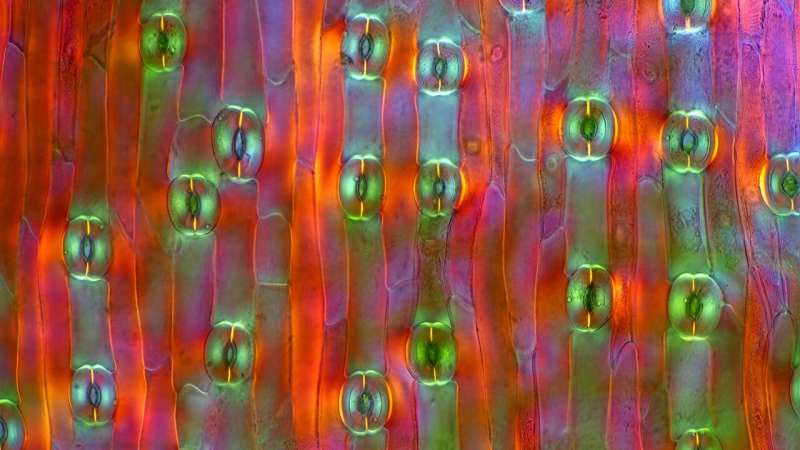Stomata (seen here magnified 100 times) allow plants to take in carbon dioxide and release water vapor. New research finds that climate models may be underestimating how stomatal response to drought affects climate. Credit: MarekMiś, CC BY 4.0
Plants both absorb carbon dioxide and release water vapor through their stomata, or pores on their leaves. In drought conditions, plants close these pores to conserve water, and this reduces their carbon dioxide uptake as well.
Earth system models are computer-based simulations used to gather information about the complex interactions between Earth's atmosphere, land, oceans, ice, and living organisms. They can be a valuable tool for predicting the effects of climate change.
But new research by J. K. Green and colleagues published in AGU Advances reports that current models may be yielding inaccurate climate projections by underestimating how moisture availability affects stomatal conductance, or the way plants exchange carbon, water, and energy with the atmosphere.
The researchers used a combination of surface and near-surface air temperature information from satellites, as well as observation-based reanalysis data, to estimate global canopy conductance, or the sum of all stomatal conductance of leaves in a canopy. They then used this information to evaluate Earth system model performance.
Their findings suggested that Earth system models are underestimating the canopy conductance's response to changes in moisture availability by about 33% and up to 50% in some cases. This is especially true in semiarid and subhumid regions such as savannas, croplands, and grasslands, where temperatures range from 5°C to 25°C.
This underestimation occurs because the models are not adequately reducing canopy conductance as the soil moisture levels change. Because canopy conductance plays an important role in atmospheric carbon, energy, and water movement, misrepresenting it can cause significant errors in climate projections during droughts.
More information: J. K. Green et al, Systematic Underestimation of Canopy Conductance Sensitivity to Drought by Earth System Models, AGU Advances (2024). DOI: 10.1029/2023AV001026
Provided by Eos
This story is republished courtesy of Eos, hosted by the American Geophysical Union. Read the original story here.
























